The iPhone 6 Review
by Joshua Ho, Brandon Chester, Chris Heinonen & Ryan Smith on September 30, 2014 8:01 AM EST- Posted in
- Smartphones
- Apple
- Mobile
- iPhone 6
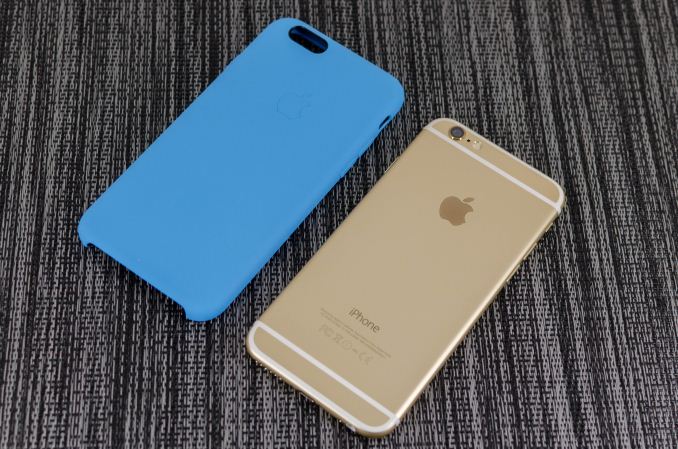
With every launch of the iPhone, Apple seems to have everything to lose and not much to gain. Apple’s iPhone line accounts for the majority of profits in the smartphone space, and as the smartphone market marches towards maturity it seems inevitable that companies like Xiaomi will be able to deliver largely similar experiences at much lower prices. The same once happened with Apple in the days of the PC industry where Apple approached irrelevance. Yet generation after generation, Apple seems to be able to hold on to a majority of profit share, and they’ve managed to tenaciously hold on to their first-mover advantage.
This brings us to the iPhone 6. This is now the eighth generation of the iPhone, and the fifth generation of the iPhone’s industrial and material design. We should note right now that this review is specifically for the iPhone 6; for the iPhone 6 Plus, please see our iPhone 6 Plus companion review. At this point, it’s not really possible to revolutionize the smartphone, and on the surface, the iPhone 6 seems to be directly inspired by the iPod Touch. However, instead of the chamfered edge where the display meets the metal unibody we see a continuous curve from the sloping glass to the metal unibody that looks and feels great. While the M8 was one of the best phones for in-hand feel, the iPhone 6 goes a step further due to the reduced weight and rounded side. I've always felt like the HTC 8X had one of the most compelling shapes for a phone, and the incredibly thin feel of the iPhone 6 definitely reminds me of that.
Along the left side, we see the standard volume buttons and mute switch that continue to have the same solid feel and clean clicking action. As I discuss in the iPhone 6 Plus review, going by Consumer Reports' data it seems that there is a weak point near the bottom of the volume rocker, although it's far less likely to be an issue on the iPhone 6 due to its smaller size. Along the top, there isn’t a power button because it’s been moved to the right side of the phone so there’s nothing notable on the top.
On the right side, we see the previously mentioned power button and also the SIM tray, which is ejected by inserting a pin into the eject hole. Similarly to the volume buttons, the power button has a solid feel that gives a distinct click when triggered and continues to be quite unique when compared to phones other than recent iPhones.
The bottom has the Lightning connector, speaker, a microphone, and 3.5mm headset jack. The placement and design of all these elements are largely similar if not shared directly with the iPod Touch.
The back of the phone continues to share elements from the iPod Touch. The camera, microphone, and LED flash are almost identical in their appearance, even down to the camera hump’s design. The LED flash does look different to accommodate the second amber flash, but the shape is identical. The only real difference is that the antennas of the iPhone 6 are the metal pieces on the top and bottom, with the associated plastic lines instead of a plastic RF window.
The front of the phone is decidedly more similar to the iPhone 5s though, with the Touch ID home button. While the earpiece hasn’t moved, it seems that the front facing camera has been moved back to the left side of the earpiece, and the sensors for light and proximity are now above the earpiece. For the most part, there’s not much to comment on here but after using the iPhone 6 for an extended amount of time I’m definitely sure that the home button is relatively closer to the surface of the display glass than before. In addition, the home button has a dramatically improved feel, with short travel, clean actuation, and a reassuring click in most cases.
Overall, while I was undecided at the launch of the iPhone 6 I definitely think the look of the new iPhone has grown on me. The camera hump’s accent serves as an interesting design touch, and the feel of the design is definitely much more comfortable and ergonomic than before. I’m not really sure that the extra reduction in thickness was necessary, but it does make for a better first impression. In the launch article I was a bit surprised that Apple chose to have a camera hump but given the fact that the iPod Touch has the same design it seems that there is precedent for such a move. I personally feel that the design wouldn’t be worse by increasing thickness to eliminate the hump and improve battery life as a result.
Apple has also introduced a new silicone case, which brings a lower price point than the leather cases. Surprisingly, this is a rather high quality case, and as far as I can tell it doesn’t carry any of the issues that silicone cases traditionally have. There’s a nice lip to make sure that the display glass doesn’t touch a surface if the phone is put face down, and the material doesn’t seem to stretch or attract pocket lint the way most silicone cases do.
There’s definitely a lot more to talk about though, and to get a sense of the major differences I’ve put together our usual spec table below.
| Apple iPhone 5s | Apple iPhone 6 | Apple iPhone 6 Plus | |
| SoC | Apple A7 | Apple A8 | Apple A8 |
| Display | 4-inch 1136 x 640 LCD | 4.7-inch 1334 x 750 LCD | 5.5-inch 1920 x 1080 LCD |
| WiFi | 2.4/5GHz 802.11a/b/g/n, BT 4.0 | 2.4/5GHz 802.11a/b/g/n/ac, single stream, BT 4.0, NFC | |
| Storage | 16GB/32GB/64GB | 16GB/64GB/128GB | 16GB/64GB/128GB |
| I/O | Lightning connector, 3.5mm headset | ||
| Size / Mass | 123.8 x 58.6 x 7.6 mm, 112 grams | 138.1 x 67 x 6.9 mm, 129 grams | 158.1 x 77.8 x 7.1 mm, 172 grams |
| Camera |
8MP iSight with 1.5µm pixels Rear Facing + True Tone Flash 1.2MP f/2.4 Front Facing |
8MP iSight with 1.5µm pixels Rear Facing + True Tone Flash 1.2MP f/2.2 Front Facing |
8MP iSight with 1.5µm pixels Rear Facing + True Tone Flash + OIS 1.2MP f/2.2 Front Facing |
| Price | $99 (16GB), $149 (32GB) on 2 year contract | $199 (16GB), $299 (64GB), $399 (128GB) on 2 year contract | $299 (16GB), $399 (64GB), $499 (128GB) on 2 year contract |
As you can see, this is a major release even at a high level. While the design might take some inspiration from the iPod Touch, the hardware is a completely different beast. There’s a new SoC, the A8; the iPhone 6 also includes a bigger and better display, newer WiFi module, bigger battery, and a better camera. Of course, there’s a lot more to the story of the iPhone 6 than a spec sheet. The first major difference that we’ll talk about is the SoC.


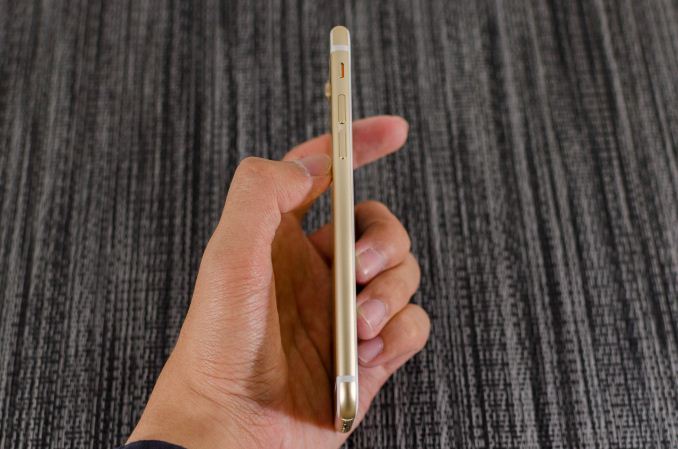
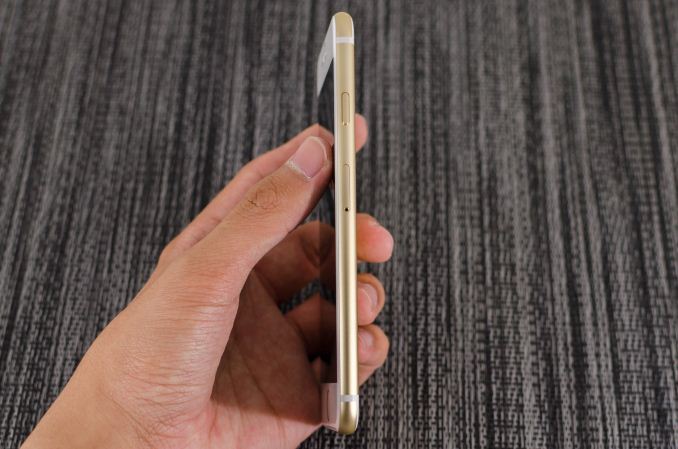
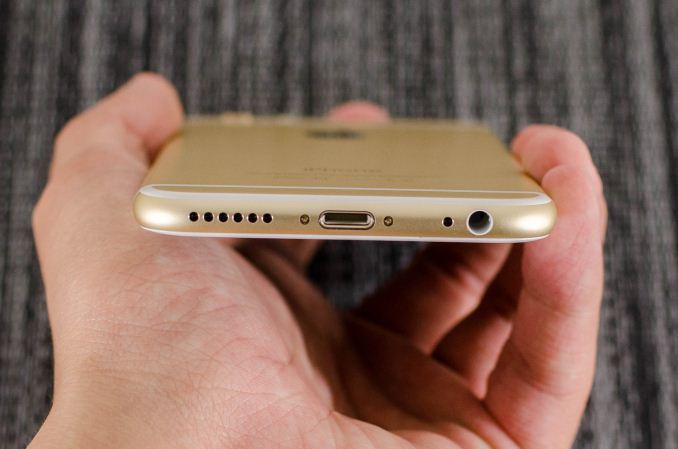
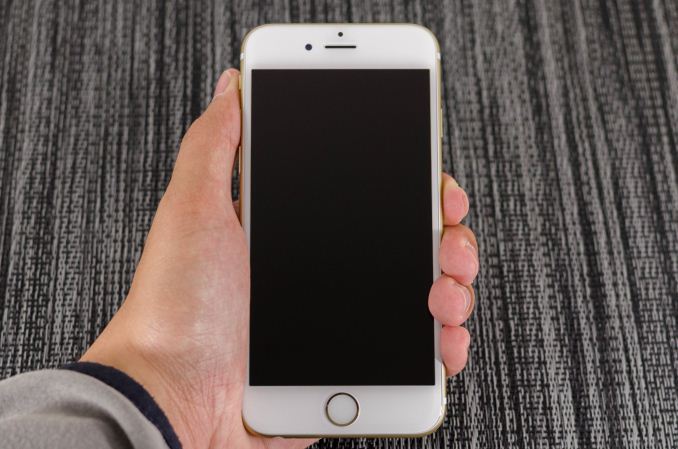
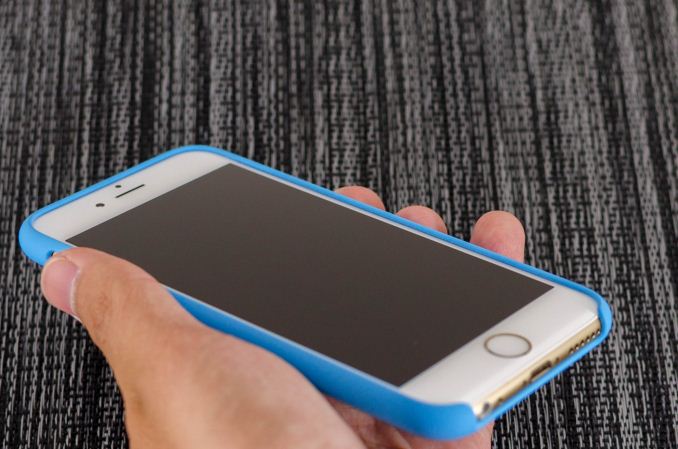








531 Comments
View All Comments
RyanBeta - Wednesday, October 1, 2014 - link
A lot was made of the glass in the run up to this launch but I see no comment about it in the article.I am specifically looking to see if it has changed or information on the materials used over the years. When the original iPhone came out it seemed like they kept with the same glass material through 4s.
As someone who does not use a protective cover and treats my phone well it is frustrating to see the copious amount of minor scratches that have built up on the glass of my 5s in the past year or so. It has probably a hundred or so minor scratches vs the 5 or so scratches I could see on my 4s when I turned it in after 2 years.
ELPCU - Wednesday, October 1, 2014 - link
u kidding me? Yes, RAM has power cost: TINY power cost.That's the worst excuse EVER.
power consumption of RAM is way less than that of display or GPU.
uhuznaa - Wednesday, October 1, 2014 - link
Yeah, but when the display is off and the GPU in deep sleep (like when you don't actively use the phone), RAM still needs to be powered and this can become a major part of standby power draw then. I would like to see standby power usage actually tested though. My old iPhone 4 drains about 10% battery per 24h in standby, which certainly helps with having some battery left when you actually start using it during the day.zhenya00 - Wednesday, October 1, 2014 - link
Then you haven't done the calculations. If your ram draws even 5mA when idle (probably in the ballpark, but we don't really know - this study from 2010 indicates that the 128MB of mobile ram in the test device used ~1mA, 8x that much certainly uses more https://www.ssrg.nicta.com.au/publications/papers/... then the RAM alone will drain the 1810mAh battery of the iPhone 6 in 15 days. If increasing the RAM to 2GB increases that power consumption just 50% to 7.5mA, you lose 5 days of standby time! If it doubles to 10mA, you lose half your standby life, and now RAM alone will drain the battery in 7.5 days.RAM power consumption is important because it is powered 100% of the time so even tiny increases in power consumption have a large effect on the overall battery life of the device.
ELPCU - Wednesday, October 1, 2014 - link
Before reading review, I already started to read comment and it's soo fun to watch everyone arguing whether apple sucks or rocks.TheSlamma - Wednesday, October 1, 2014 - link
it's not fun, it's patheticmjh483 - Wednesday, October 1, 2014 - link
Solid review from Anandtech as always. Would you please elaborate on why you aren't willing to use iPhone 6 as your everyday phone?Torakaru - Wednesday, October 1, 2014 - link
Hello,I really liked so much your iPhone6 & 6+ reviews, but I found something interesting in your comment nowhere else found and for which I would like to have a deeper knowledge experience sharing from your side. Basically you said:
"The only flaw that the iPhone 6 has is a lack of RAM, and this is only an issue if you also felt it was an issue on the iPhone 5s."
I find it very interesting because I have being reading plenty of reviews of the new iPhone6/6+ and you are the first ones to mention it. I think that you are right, but I have an iPhone4, so I dont know. Could you be so kind to be more precise about that feeling that you have? It is due lack of RAM for multitasking, or also for single tasks?
Thanks a lot in advance guys!!!
Torakaru - Wednesday, October 1, 2014 - link
By the way guys, if any of all of you have the iPhone5/5S or the iPhone6/6+ already and want to share also your experience regarding the possible lack of RAM (noticeable) in your daily use, please comment. Thanks! ;-)dmacfour - Wednesday, October 1, 2014 - link
Switched from a Galaxy, didn't notice a thing.